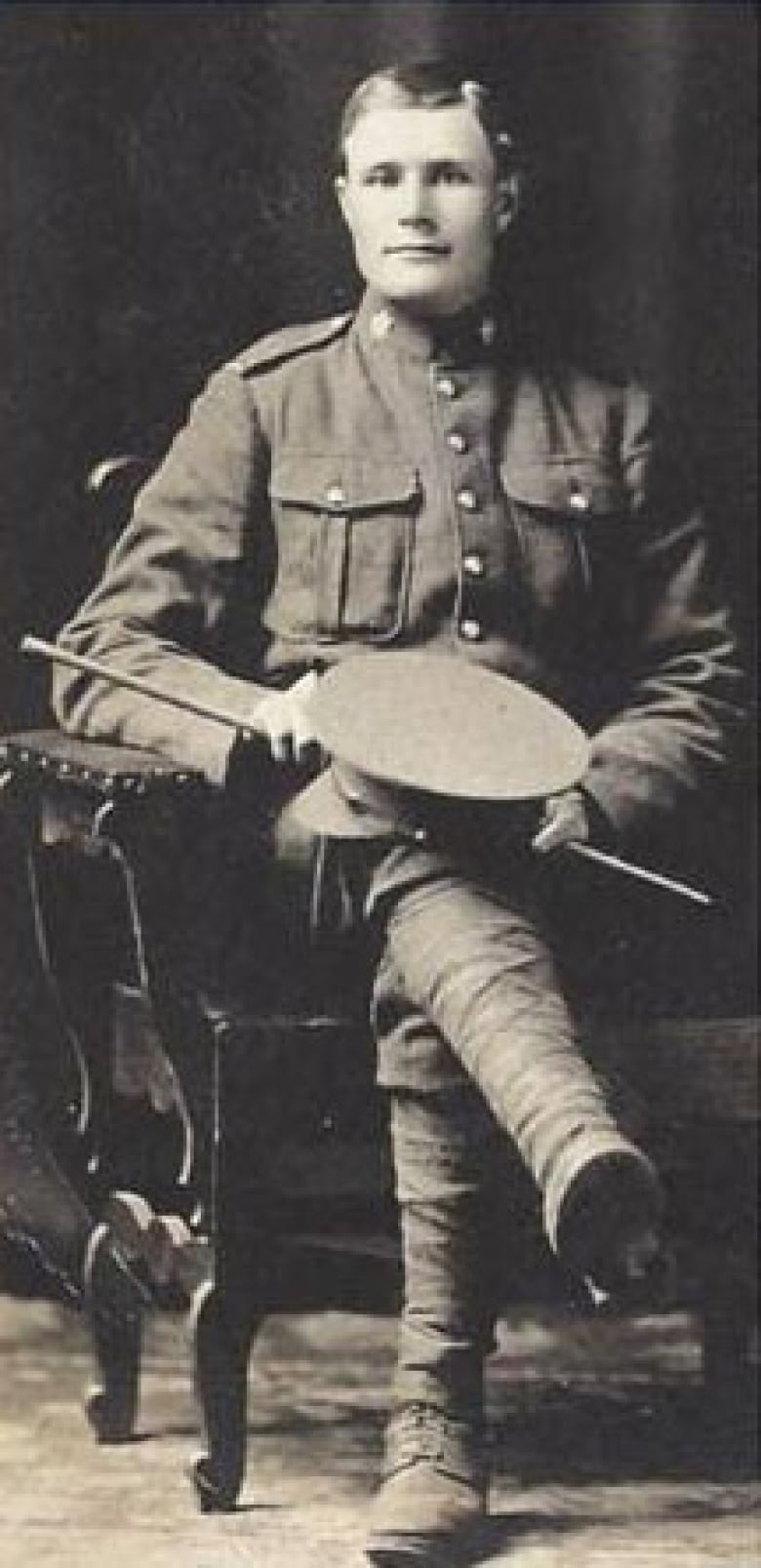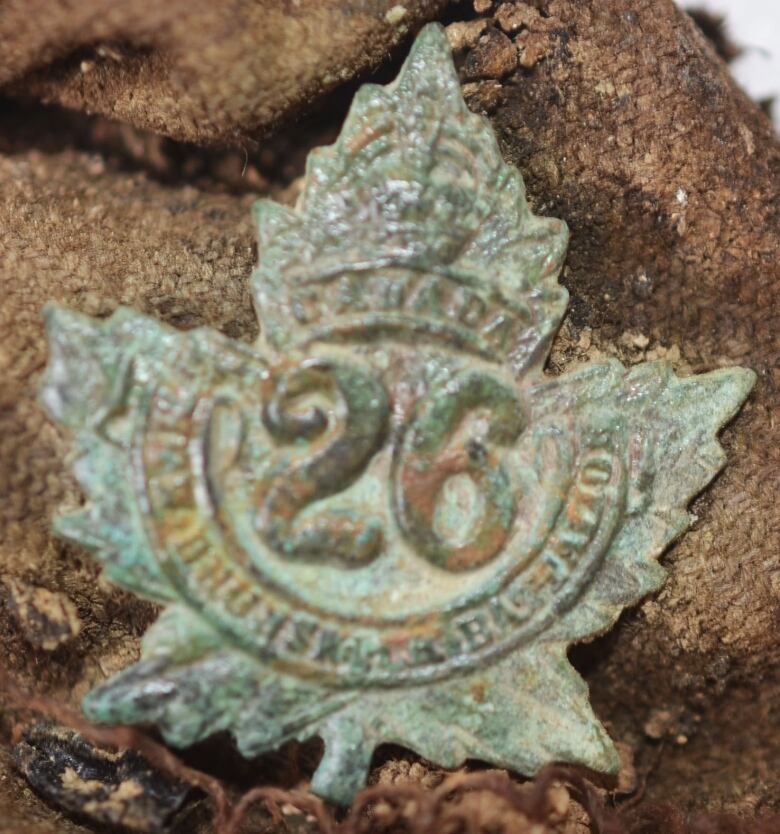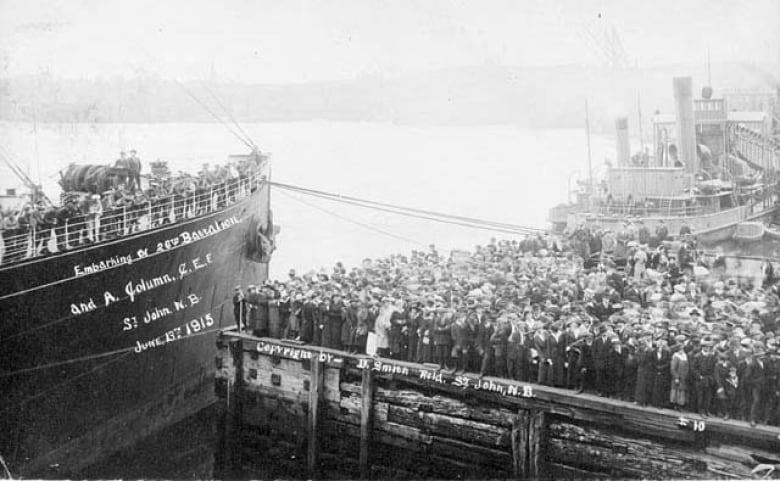Remains of WWI soldier found in France identified as New Brunswick farmer
Pte. John (Jack) Henry Thomas, 28, of Birch Ridge, who was killed in 1917, will be buried this summer

A 28-year-old New Brunswick farmer who became a soldier and was killed in battle in northern France more than a century ago will be laid to rest this summer after military forensic experts managed to identify his remains.
Pte. John (Jack) Henry Thomas of Birch Ridge in Victoria Countywas a member of the26thCanadian Infantry Battalion (New Brunswick), Canadian Expeditionary Force, during the First World War.
Thomas was killedon Aug.19, 1917, during the Battle of Hill 70 one day shy of his one-year anniversary of enlisting in Saint John. His body was never recovered.
Skeletal remains found at a construction site in Lens, France, nearly two years ago have been confirmed as beingThomas, the Department of National Defence and Canadian Armed Forcesannounced on Monday.

"One hundred years after the end of the First World War, we honour and remember Private Thomas," Defence Minister Harjit Sajjan said in a statement.
"We will never forget his sacrifice, or those of the nearly 61,000 brave Canadians who gave their lives in the First World War so that all of us might live in peace and security."
Thomas was identifiedby the casualty identification program's Casualty Identification Review Board last October through historical, genealogical, anthropological, archeological and DNA analysis.
His relatives have been notified and Veterans Affairs Canada is providing them with support as final arrangements are made, the statement said.
'Time has not lessened our gratitude'
Thomas will be buried by his regiment at the Commonwealth War Graves Commission's LoosBritish Cemetery outsideLoos-en-Gohelle, France, during a public service on Aug.23 at 1:30 p.m. Central European Time.
"We will lay him to rest with the honour he and his family deserve," SeamusO'Regan, the veterans affairs minister and associate minister of national defence,said in the statement.
"While a century has passed, time has not lessened our gratitude to Private Thomas. May he, and those who fell with him, never be forgotten."
Thomas was born on Jan. 25, 1889, toHenry Arthur Thomas and JaneThomas inChewale, South Wales, in the United Kingdom.
Hegrew up in Birch Ridge with his brother and four sisters and worked in community as a farmer.
He enlisted in Saint John with the 115th Canadian Infantry Battalion, CEF, on April 20, 1916, at the age of 27, and shipped out to Liverpool, England, on July 23, 1916.
After a couple of months of training, he joined the 112th Battalionat CampBramshottin England onOct. 16,1916.

On Feb. 2, 1917, he wastransferred to the13th Reserve Battalionand then assigned to the26th Canadian Infantry Battalion (New Brunswick), CEF, part of the Canadian Corps in France on April 20, 1917.
The Battle of Hill 70, the first major action fought by the Canadian Corps under a Canadian commander in the First World War,began on Aug. 15,1917.
Thomas's battalion took part in the initial assault to secure the so-called Blue Line position before passing through the 22nd Battalion to secure the"Green Line" position. His battalion then rotated through defensive duties with other battalions.
Killed in counter-attack
Thomas was killed two days into the battle while his battalionwas holding a forward position against German counter-attacks.
He was one of about2,100 Canadians killed duringthe 10-day battle that saw the strategic high point of Hill 70 secured in Allied hands until the end of the war.
More than 1,300 of the soldiers who lost their lives in the Battle of Hill 70 have no known graves.
Thomas's name is engraved on the Vimy Memorial, which commemorates the more than 11,000 Canadian soldiers killed in France during the First World Warwhose bodies were never recovered.

In August 2016, skeletal remains of three soldiers were discovered during digging on the grounds of a plastic manufacturer in Lens, along with First World War artifacts,including general service buttons, ammunition, and a 26th Canadian Infantry Battalion (New Brunswick) collar badge.
The Commonwealth War Graves Commission was notified and, with the support of French regional authorities, took possession of the remains and artifacts andtransportedthem to one of its facilitiesin Beaurains, France.
"It has been our privilege to assist in returning Private Thomas to his countrymen, so that he might be buried with a name, and so that all who read his headstone will understand his sacrifice," said David Kettle, secretary general of the Canadian Agency of the Commonwealth War Graves Commission and a retired brigadier-general.
The casualty identification program's Casualty Identification Review Board includes participants from the Canadian Forces Forensic Odontology Response Team and the Canadian Museum of History.













_(720p).jpg)


 OFFICIAL HD MUSIC VIDEO.jpg)
.jpg)



























































































